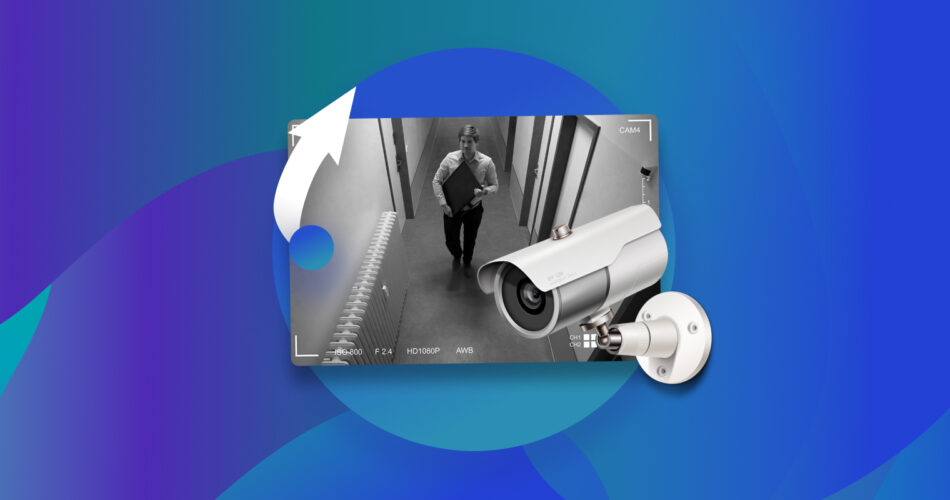Despite their importance, surveillance videos are not meant for permanent storage and they’re susceptible to data loss like any other form of data. This may be caused by accidental deletion, malfunction-driven corruption, and more. Fortunately, it is possible to retrieve deleted CCTV footage in most cases even without a backup – but you need to act fast!
In this article, we’ll provide a step-by-step guide on how to recover deleted videos from CCTV cameras. We’ll also cover the different ways one can transmit and store CCTV videos, and how these affect the footage recovery process. Read on.
Can You Recover Deleted Footage From CCTV?
Yes! In most cases, it’s possible to retrieve deleted CCTV footage as long as you act quickly. Even if you don’t back up your data (which you really should), you can restore deleted CCTV videos with data recovery software. This is a tool that can scan and extract videos directly from the storage device that saves the footage from your security camera system.
However, CCTV cameras have evolved greatly over the years and a huge variety now exists in the market. The recovery process slightly differs depending on how your security camera system transmits and stores its footage. But don’t worry – we summarize all this information below and we’ll help you get on the right track to restoring your missing footage.
If you think your CCTV’s storage device has been physically damaged, we highly recommend you send it to a professional data recovery service instead of attempting to restore the footage yourself to avoid the risk of permanent data loss.
What Type of Camera Connection Do I Have?
There are two main types of CCTV camera connections with regard to storage: wired and wireless. Let’s break down the differences between the two to better understand their storage system and the consequent process of video recovery.
- 🔌 Wired CCTV Camera – When your CCTV is connected to a central hub via coaxial or Ethernet cables, it’s classified as a wired CCTV camera. Wired cameras merely transmit video signals to a hub, which is what actually records and stores the footage. Digital Video Recorder (DVR), Personal Video Recorder (PVR), and Network Video Recorder (NVR) devices are examples of such hubs and usually save videos in digital format to hard drives, SSDs, USB, and other familiar external storage devices.
- 📶 Wireless/Wire-free CCTV Camera – Unlike wired cameras, wireless cameras don’t need a DVR or similar hub device to store videos. Instead, they send video signals to a network drive or via WiFi to the cloud. Other wireless cameras carry SD cards that only record and store footage when the camera detects motion (due to their limited storage capacity).
It’s easy to mistake wireless cameras for wired variants because of the cables connected to them. Wireless cameras transmit video signals via WiFi but still rely on a wire to connect them to a power source.
Where Is My CCTV Footage Stored?
Now that we understand how wired and wireless CCTV cameras store their videos, let’s quickly go through the type of storage devices they use. Knowing where exactly your footage is stored is the first step in the video recovery process, as it dictates how you’ll connect your CCTV camera system’s storage device to your computer.
Storage Type | Description |
Hub Storage | Wired CCTV cameras usually send video and audio feeds to a DVR (Digital Video Recorder), PVR (Personal Video Recorder), or NVR (Network Video Recorder). The feeds are then converted to digital format and stored on a physical drive such as a hard drive, SSD, memory card, or USB drive connected to your hub device internally or externally. To recover deleted CCTV footage from DVR, you need to restore data from the external hard drive or internal drive it uses. |
Memory Cards | Many wireless CCTV cameras have an SD card slot, where SD cards serve as the primary storage device. Due to their limited capacity, they are largely prone to data loss – once they hit full capacity, new footage is simply allowed to overwrite old videos, resulting in data loss. |
NAS | Other wireless CCTV cameras can store videos on a network-attached storage (NAS) system. Most NAS systems use a dedicated network device where you can attach a hard drive or SSD, while others can be set up using an old computer. Devices on the same network can then store files wirelessly on the drive. |
Cloud Storage | Many modern CCTV camera systems are designed to send and record videos to a cloud-based storage service. This makes the videos accessible from anywhere and protected from theft. However, for it to work as intended, it requires a consistent and reliable internet connection – otherwise, videos may be lost during transmission. |
How to Recover Permanently Deleted Videos from CCTV
Most CCTV cameras share a problematic behavior: once their storage devices are full, they allow new footage to overwrite the old data. However, even if you watch your storage capacity like a hawk, disk failure, corruption, and accidental deletion can cause also data loss. Fortunately, as long as the videos aren’t completely overwritten, video recovery software can retrieve footage from your CCTV.
For this article, we’ll be using Disk Drill. Disk Drill is a great CCTV data recovery software because it works with all types of CCTV storage devices such as internal and external hard drives/SSDs, SD cards, and USB sticks as well as their common file systems like FAT32, NTFS, EXT2, and EXT3 (among others). Disk Drill also supports over 400 file types, including those used by CCTV cameras such as AVI, MOV, FLV, WMV, and more.
Disk Drill for Windows only provides 500 MB of free data recovery. Beyond that, you’ll have to purchase a one-time license. Free DVR data recovery software exist, but they may not recognize the file types nor support the file systems your CCTV camera uses. If you want to know more about Disk Drill before installing it on your computer, read our full Disk Drill review.
If your CCTV camera system uploads videos directly to the cloud, you will have to contact the company that hosts the cloud storage service that you use to restore the deleted CCTV footage.
To recover deleted CCTV footage using Disk Drill:
- The first step is to connect your CCTV’s storage device to your computer. If your camera system uses a removable storage device like a USB stick, memory card, NAS, or external hard drive/SSD, connect it to your computer. If your camera system uses an internal hard drive or SSD, you’ll need to connect it directly to your computer using a USB cable.
- Download and install Disk Drill. Once installed, launch the app.
- From the middle pane, select the CCTV storage device from the list of drives. Then, click Search for lost data.
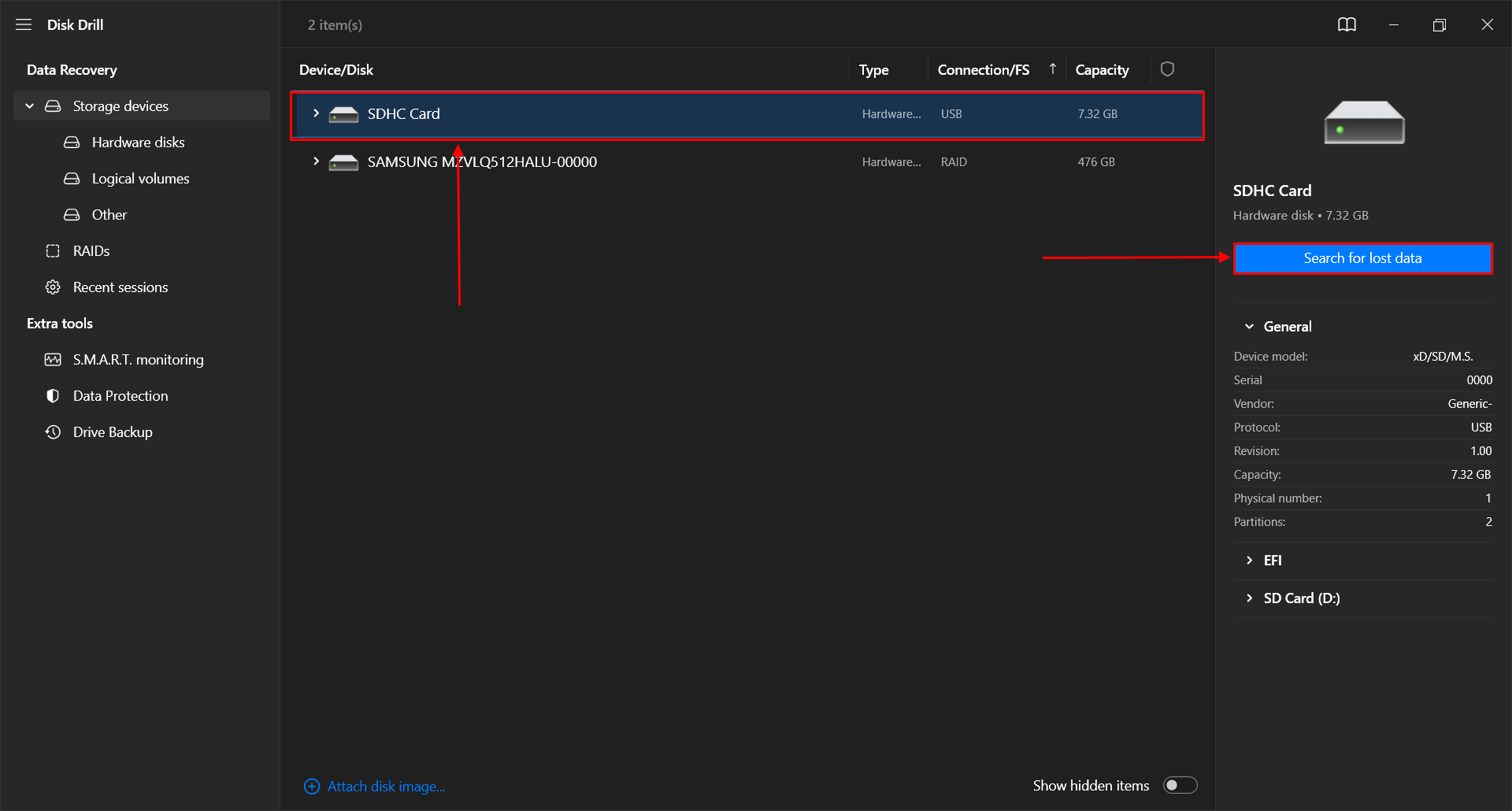
- Wait for the scanning process to finish. Then, click Review found files.
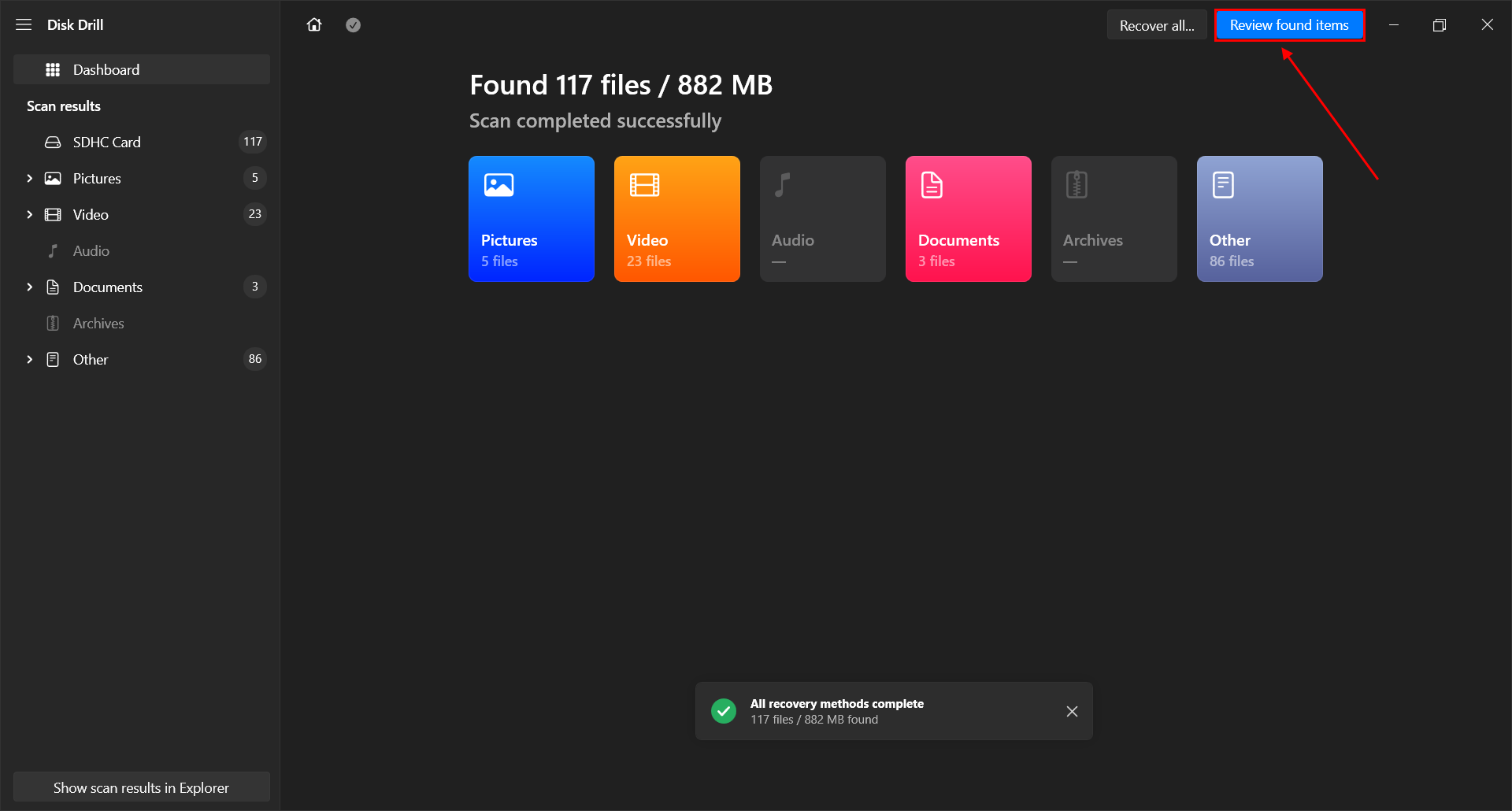
- For convenience, you can look for the deleted file by sorting the files by video in the left sidebar. You can also preview the video by hovering your mouse pointer beside the file and clicking the eye button that appears.
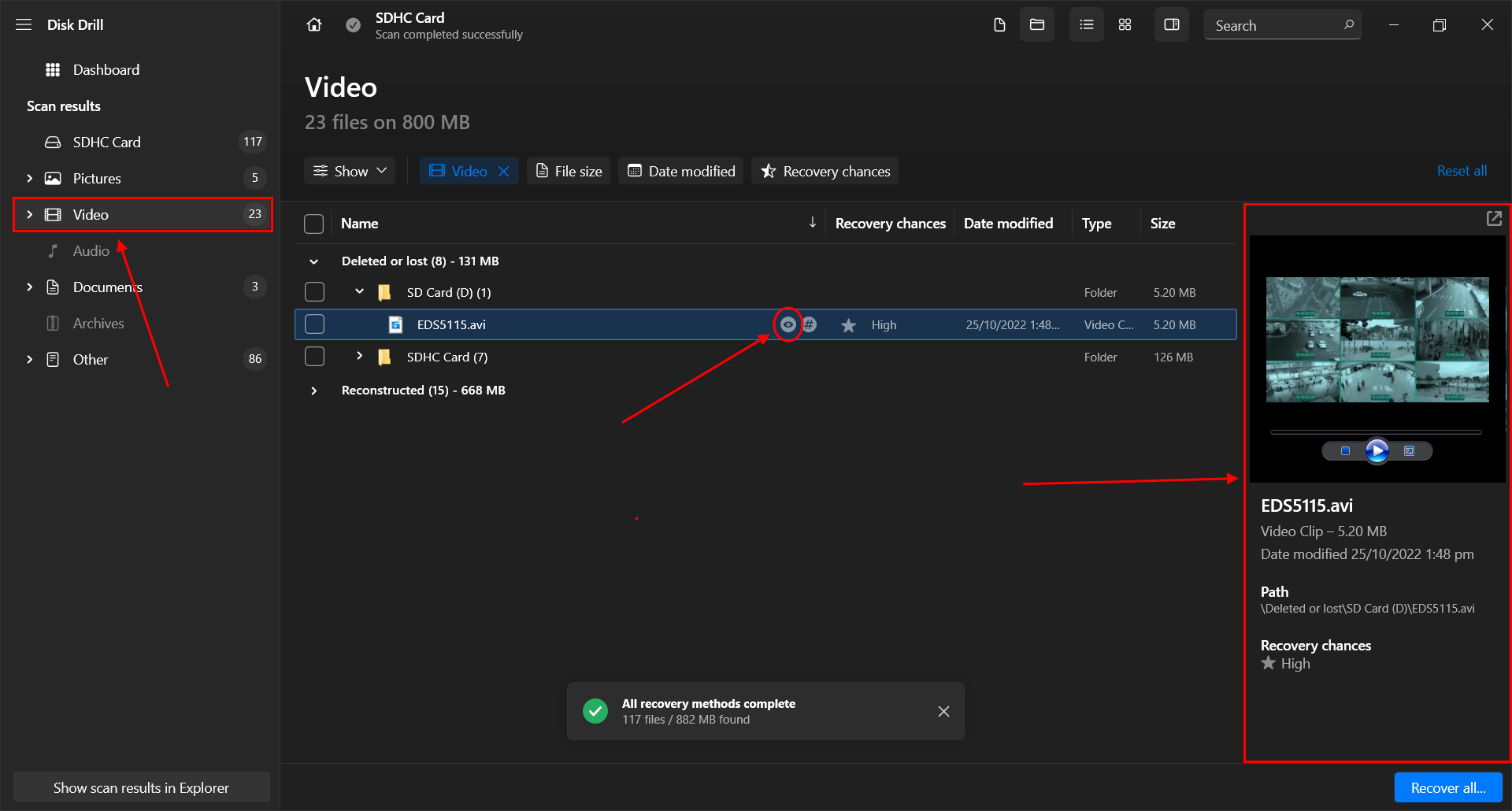
- Once you’ve found the deleted video, tick the checkbox beside it. Then, click Recover.
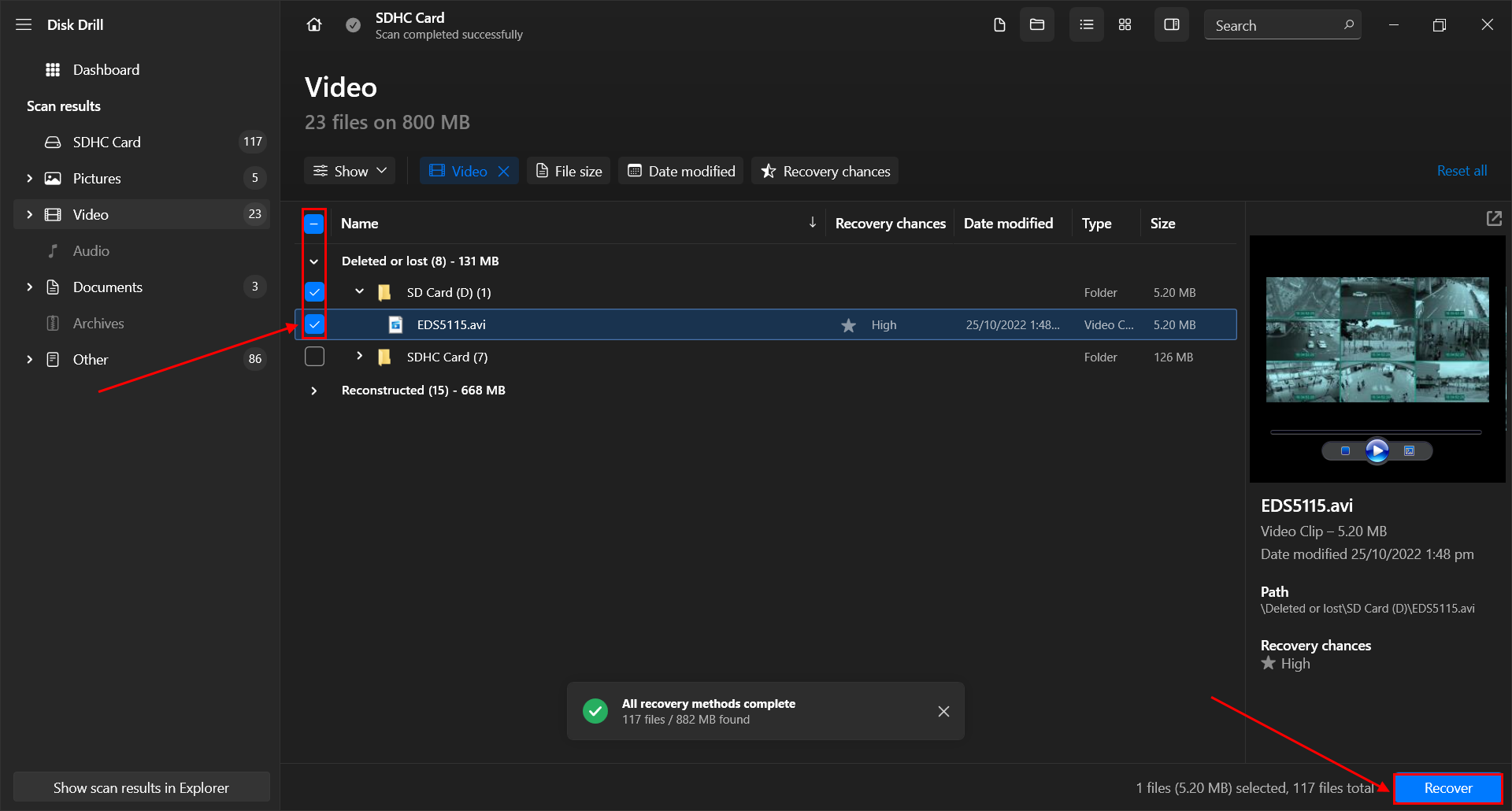
- Choose where you want to save the recoverable video file. Then, click Next to recover the deleted footage from your CCTV.
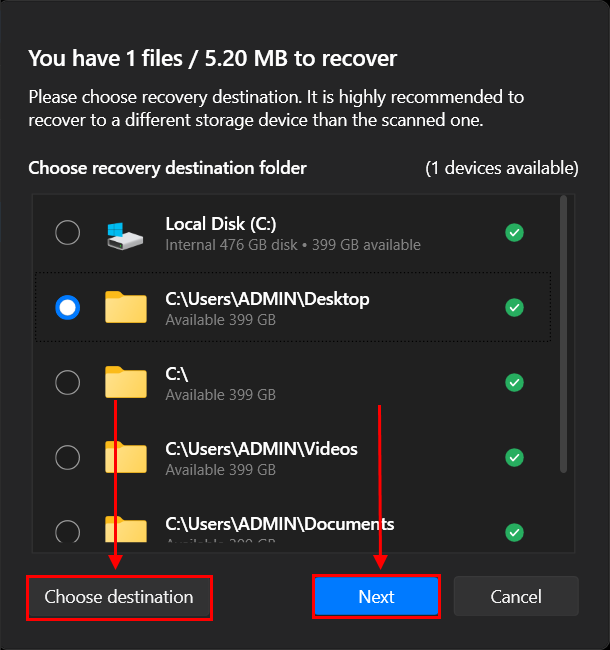
- Wait for the recovery process to finish. Click Show recovered data in Explorer to view the recovered CCTV video.
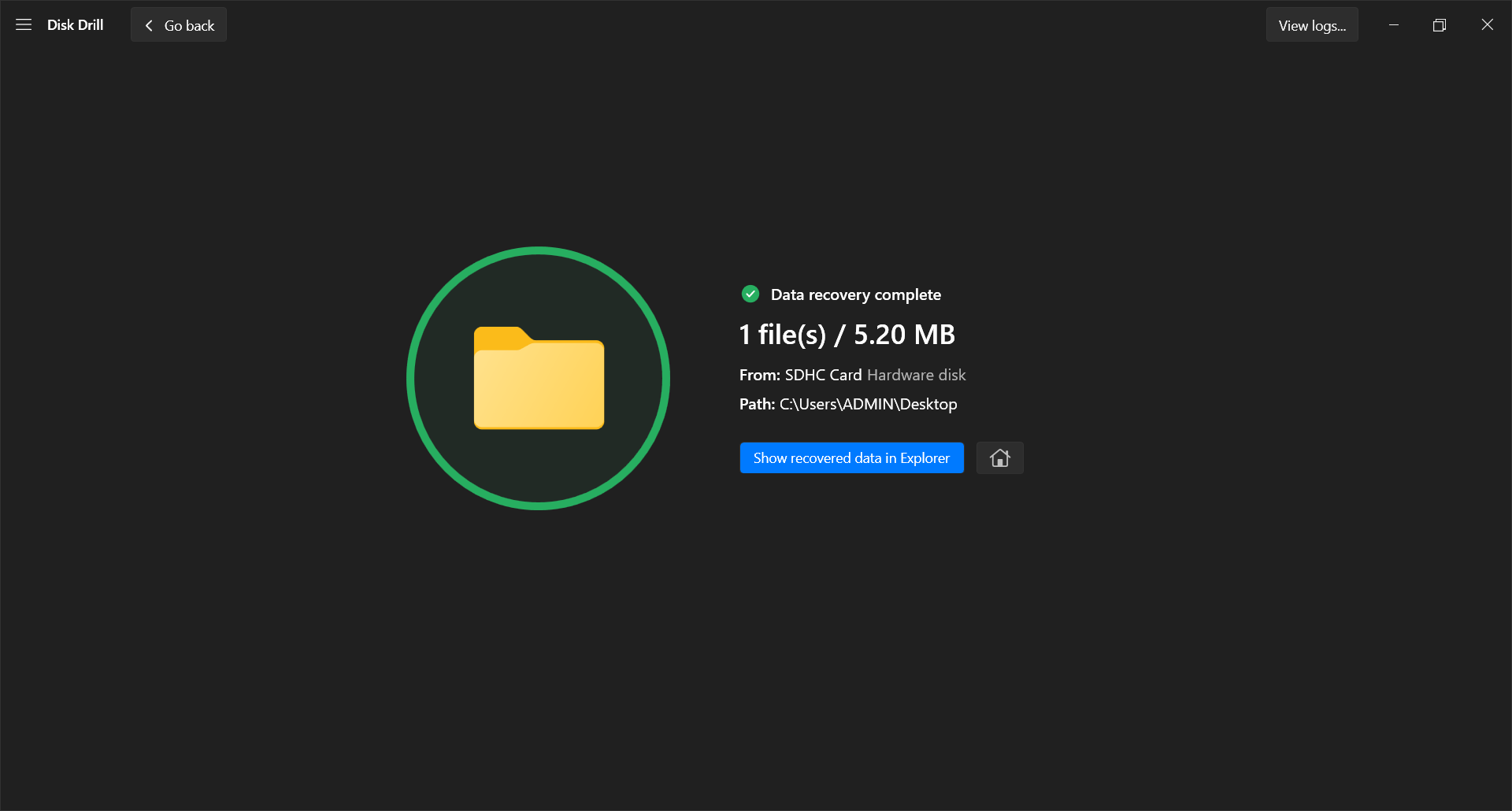
FAQ
How to retrieve CCTV footage from DVR?
The surefire way to retrieve CCTV footage from DVR is to use professional data recovery software, like Disk Drill. Here’s how to recover your CCTV video using Disk Drill:
- Connect your CCTV’s storage device to your computer.
- Download, install, and launch Disk Drill.
- Scan the drive. Once completed, select the video you want to recover and click Recover.
- Choose the destination folder where the file will be saved. Then, click OK.
Can police recover deleted CCTV footage?
Yes, as long as all legal requirements are complied with. Law enforcement may ask for the whole hard drive (or the storage device containing the CCTV videos) to be turned over. In this case, they could run a full forensic recovery of the drive. In some cases, a proper warrant may not be at all required as in the case of terrorism. It’s best to check your local laws because it varies per country/jurisdiction.
Does CCTV footage get deleted automatically?
Deleted, no. Overwritten, yes. CCTV footage can only be deleted deliberately. However, when the storage memory is full, old videos get overwritten by newer ones. In effect, the older videos are automatically deleted from storage to make space for the more recent videos.
How many days CCTV footage is kept?
It depends on the storage capacity, number of cameras, and quality of videos (in terms of resolution and frames per second). Depending on your surveillance system, it may be able to hold only a week’s worth of footage or it can last for as long as 3 months.
Conclusion
Like any other form of data, CCTV footage is susceptible to deletion, corruption, and other forms of data loss. It’s especially prone to overwriting when you have limited storage capacity. While data recovery software gives you a better chance to restore your footage, we highly suggest routinely backing up your data and upgrading your storage capacity when you have the budget.
This article was written by Alejandro Santos, a Staff Writer at Handy Recovery Advisor. It was also verified for technical accuracy by Andrey Vasilyev, our editorial advisor.
Curious about our content creation process? Take a look at our Editor Guidelines.
